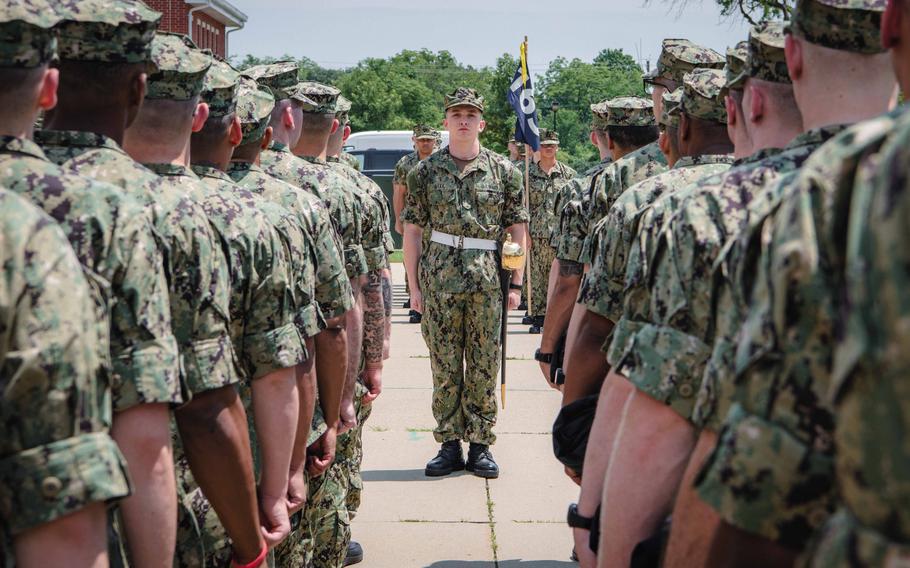
Recruits stand in formation on July 10, 2024, at U.S. Navy Recruit Training Command in Great Lakes, Ill. More than 40,000 recruits train annually at the Navy’s only boot camp. (Stuart Posada/U.S. Navy)
WASHINGTON — The Navy will trim one week off its Basic Military Training program, shortening the boot camp from 10 weeks to nine, beginning next month.
The change will take effect in January. It is meant to streamline redundant curriculum, such as its warrior toughness program, firefighting, seamanship and watch standing.
“We did not cut anything out — sailors will still receive everything — but we reallocated the training. So, we give them the same training, but instead of reiterating that in a classroom, we intersperse it throughout boot camp,” said Lt. Cmdr. Mack Jamieson, spokesman for Naval Service Training Command, based in Great Lakes, Ill.
The change comes on the heels of a bend in the curve in the sea service’s recruiting efforts. The Navy was on track to meet its 2024 recruiting goal of 40,000 fresh sailors, but the service was unable to push them all through boot camp before Sept. 30, the end of the fiscal year. Instead, about 38,000 recruits went through the training in Great Lakes, the Navy’s only boot camp, with the remaining slated to begin the program in through the end of 2024.
The first class to go through the shortened boot camp will arrive Jan. 6. They will graduate March 13.
In 2022, the Navy extended its boot camp program from eight weeks to 10 weeks to ensure recruits were better prepared to enter the fleet. It was the first major change to the boot camp structure in 20 years.
The two weeks were filled with training in life skills, such as organization, time management, self-awareness, goal setting and financial management. The two weeks also allowed additional time for more scenario-driven and hands-on training.
The recent change to the program will continue to incorporate the Navy’s “Sailor for Life” philosophy, which aims to foster resilience, mental toughness, and leadership skills.
“Our focus is on delivering a streamlined yet robust training experience that equips our sailors with the essential skills they need to succeed in the fleet,” said Rear Adm. Craig Mattingly, commander of Naval Service Training Command. “This change will help us achieve that, providing a rigorous curriculum that ensures readiness while enabling recruits to join the fleet faster.”